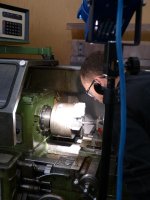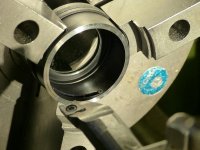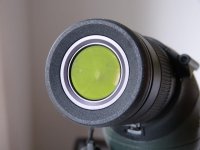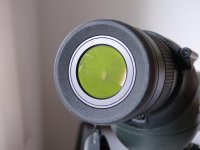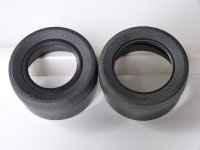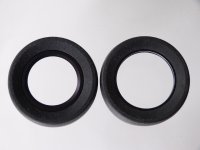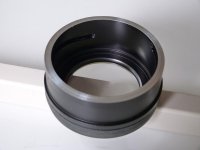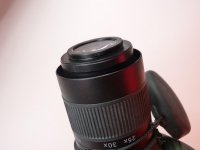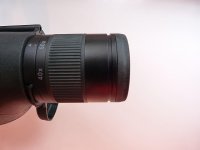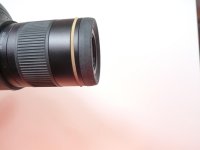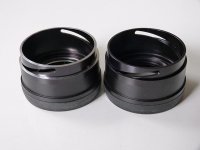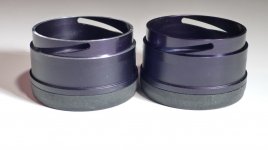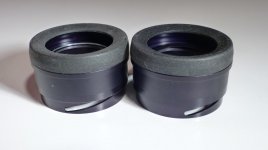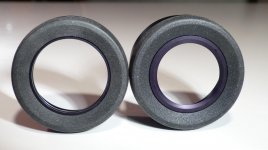
This concerns Swarovski's well known zoom eyepiece 25-50x. Despite it's wide FOV, for many wearers of eyeglasses, there is a considerable loss of FOV if one needs the glasses while using the scope. In my case, I quickly realized that I could only get the full FOV if I removed the eyecup. However, that would quickly lead to scratches on the eyeglasses. Thus, I tried to find a way to reduce the distance to the lens with a modification of the eyecup. The result, and a before-and-after comparison have already been presented in another thread:
http://www.birdforum.net/showthread.php?t=238276 in posts #12 and 13.
Here, I'd like to explain what we did.
First, however, I need to thank my son Claudio for his help. While he is not a professional on the lathe, he sure proved to be a very precise worker on it.
So here, first, are two pictures of the work in progress. I should emphasize, however, that one could get this done by anybody who knows how to operate a lathe. It was pure coincidence that my son said he could do it himself.
The second picture already reveals the three areas (blank rings) we worked on.
http://www.birdforum.net/showthread.php?t=238276 in posts #12 and 13.
Here, I'd like to explain what we did.
First, however, I need to thank my son Claudio for his help. While he is not a professional on the lathe, he sure proved to be a very precise worker on it.
So here, first, are two pictures of the work in progress. I should emphasize, however, that one could get this done by anybody who knows how to operate a lathe. It was pure coincidence that my son said he could do it himself.
The second picture already reveals the three areas (blank rings) we worked on.
Attachments
Last edited:




